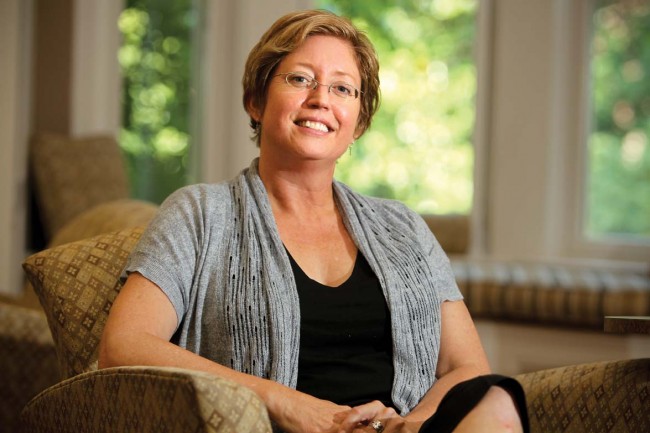
Shelagh Mulvaney is on a mission to see how technology can help adolescents with diabetes. She is working on the development and testing of several systems and programs, and won’t stop until she and her colleagues can figure out ways to help teens better self-manage their health.
“Thanks in part to technology, we have many more options in terms of what we can do to educate and support young people outside the clinic and in between office visits,” said Mulvaney.
This VUSN assistant professor became interested in health behaviors of children with chronic illnesses while doing a clinical internship at the University of Vermont. She saw first-hand how much support teens needed in dealing with an illness, like diabetes, which can be perceived as a stigma by peers. That interest infused her post-PhD work at Vanderbilt University’s Peabody College and carried through to her current faculty appointment at VUSN.
As a pediatric psychologist, Mulvaney is interested in how to improve knowledge in the still-developing teen mind, problem solving, motivation and awareness – the essentials of diabetes self-care. She has collaborated extensively with Russell Rothman, MD, MPP, associate professor of Medicine and Pediatrics, and Kenneth Wallston, PhD, at VUSN to find answers for today’s teens coping with diabetes.
With National Institutes of Health funding, Mulvaney and her team were able to develop a website designed to improve self-management among adolescents with type 1 diabetes. A multidisciplinary team of diabetes professionals, researchers, young patients and volunteers wrote and edited six multi-media stories on common challenging self-care scenarios that adolescents face to allow interactions between parents, teens and clinicians.
The results showed improvement in glycemic control, problem solving and self-care adherence. The team increased the project’s scope to include adolescents with type 2 diabetes, which is in the pilot study phase, and in coming years is hoping to further expand to enhance technology-facilitated communication between teens and their parents.
“We have broadened our abilities to engage patients through storytelling and health narratives,” said Mulvaney. “The teenagers we work with are interested in the health narratives process, and it actually helps them to know they are helping someone else.”
In addition to the Web applications, she has developed and tested a text-messaging program for adolescents using mobile devices. Clinicians, teens and other diabetes professionals created hundreds of tailored text messages addressing the barriers to self-care faced by teens such as communication with family, social support and burn-out. The results showed improvement in glycemic control in the intervention group.
“With all of these technologies there is a lot of competition for patient attention. One text message we send is viewed in context with 50 other messages a teen might have received that day,” she said. “What we can do to improve attention to health is to create a motivational process around self-care with game-like elements, such as getting points or rewards.”
She is also working on a text message reminder system for medication management with Kevin Johnson, MD,
in Vanderbilt’s Biomedical Informatics department, that will be embedded in myhealthatvanderbilt.edu, an electronic portal for patient records and information.
Mulvaney said although her work involves technology; its purpose is about reaching teens and improving health behaviors and health outcomes.
“The key is to leverage the ubiquitous nature of technology, the attention that technology already garners from young people, and integrate health and health behavior as a reason to use that technology,” she said.
While her work is focused on diabetes, she hopes it will also help patients with other chronic illnesses and will help better integrate patient centered care at the clinical level.
– Kathy Rivers